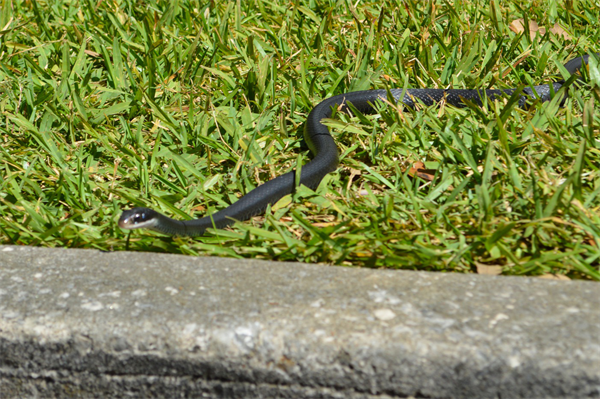 There are 32 species of snakes in Virginia, but only three are venomous, and death from snake bites is extremely rare.
There are 32 species of snakes in Virginia, but only three are venomous, and death from snake bites is extremely rare.
About 8,000 people in the U.S. are bitten by venomous snakes each year, and up to 10 of them die as a result, according to the Virginia Herpetological Society. According to the Virginia Department of Health, only about one death from snake bites occurs every 10-15 years in the state.
The state’s herpetologist, John “J.D.” Kleopfer, said 99% of all encounters between humans and snakes can be resolved safely if people heed his four words of advice: “Just. Leave. Them. Alone.
“Bad things often happen when people take matters into their own hands,” said Kleopfer, who has served as the state herpetologist with the Virginia Department of Wildlife Resources for 15 years. “If people leave snakes alone, then they don’t need to worry whether they’re venomous or not.”
Of Virginia’s three venomous snakes, only the eastern copperhead is found statewide. The other two—the northern cottonmouth and the timber rattlesnake—have limited geographical distribution.
Venomous snake bites are considered medical emergencies and need to be treated quickly. However, the chances of being envenomated are extremely low.
“Although venomous snakes occasionally may pose a risk to one’s personal health and safety, the vast majority of species do not present an imminent danger or threat to us,” said Dr. James Parkhurst, an associate professor in Virginia Tech’s Fish and Wildlife Conservation Department.
Most snakes are even beneficial. Larger snake species help manage rodent populations by eating mice, rats and voles, Parkhurst said. Many smaller snakes feed on insects and other invertebrate pests common in gardens and landscaped areas. Black racers and eastern king snakes will often prey on other snakes, including venomous species.
Some snakes serve as a food resource for other predators, such as raccoons, opossums, skunks, and birds of prey. “Thus, snakes are important players in the food web and are a key component of healthy ecosystems,” Parkhurst said.
As people are spending time outside during the summer months, they should take certain precautions, Kleopfer said. Snakes are most active at night and in warm weather, so watch where you step, and use a flashlight when walking at night. Protective clothing also is important when spending time in places where snakes may be hiding, like brush or debris.
Never handle a snake, even if you think it is dead. Recently killed snakes can bite by reflex, even detached snake heads.
One of the best ways to prevent venomous snake bites is to “get to know which snakes live in your area,” Kleopfer said. He said the Virginia Herpetological Society provides statewide identification charts and even has a feature where residents can upload images of snakes and get them identified. Visit virginiaherpetologicalsociety.com for more information.
“Remember, snakes are not out to get you and will not chase you,” Kleopfer said. “If you leave them alone, they will leave you alone.”


